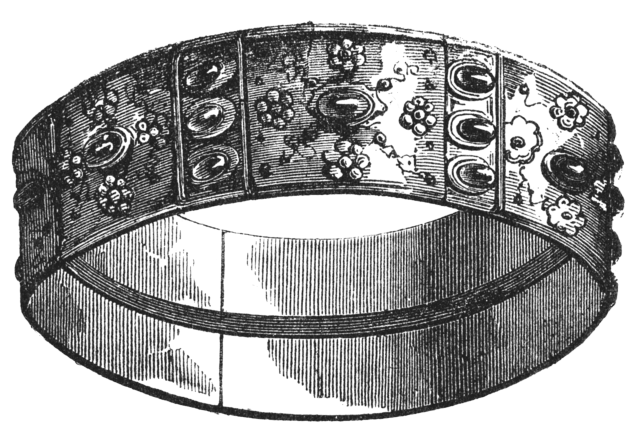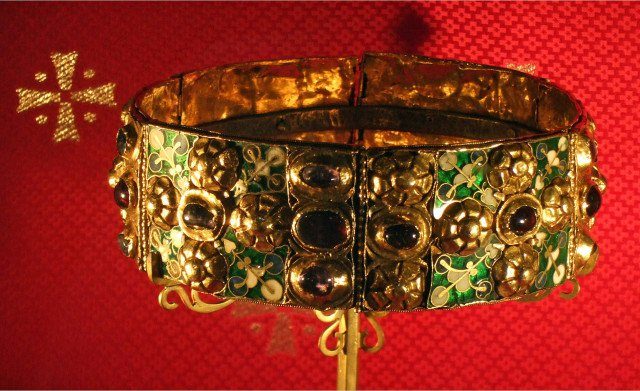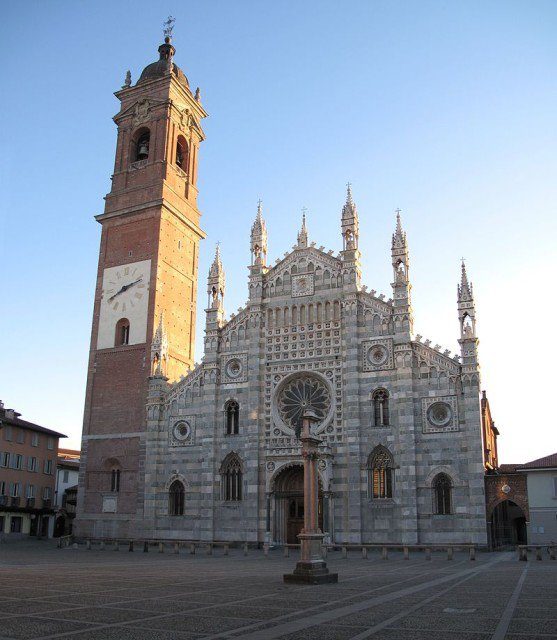One of the oldest and most significant emblems of early European Christendom was the Iron Crown of Lombardy. The Crown is known by its Latin name, Corona Ferrea Langobardiae, and it was reportedly made sometime in the early Middle Ages.
The crown carries immense religious significance on top of the legends, stories, and history associated with the relic. The name “Iron Crown” is a result of the claims that the actual crown which consists of a gold circlet fitted on a central iron band, which was, according to the legends, beaten out of a nail from the True Cross upon which Jesus Christ of Nazareth was crucified by the Romans.

It is widely believed that inside the crown there is a one-centimetre wide iron band which was part of the nail used during Jesus’ Crucifixion. The crown has an outer circle made out of six small segments of gold, beaten and partly enameled, which are joined with the support of tiny hinges. Another mesmerizing feature of the crown has to be the twenty-two gemstones standing out in relief, and in the shape of flowers and crosses; the center of the beauty of the crown. Some historians and archaeologists are of the view that the hinged construction and considerably smaller size of the crown point towards the fact that it was once a rather large armlet or possibly a votive crown.
Others suggest that the smaller size is not due to the different nature of the crown, it is simply the consequence of many adjustments the crown had to go through, especially after the loss of two of its most prominent segments; these claims are backed by a number of historical documents that speak of the readjustments made to the crown.

The origin story of the ‘holy crown’ goes as far back as the reign of Emperor Constantine I. The legend is that the nail was gifted to the Emperor by his mother St. Helena after she discovered the True Cross of Jesus Christ during her search. The story goes on to suggest that initially there were four nails discovered by St. Helena in all, but one of the nails were used by the Queen mother to calm a sea storm whereas the other was reportedly incorporated into a small diadem which was then mounted onto the helmet worn by Emperor Constantine.
The other two nails were fitted onto the head of a statue attributed to the Emperor and melted down and used for a war horse of Constantine.

Despite quite an elaborate story regarding the origins of the crown, there still is a lot of mystery surrounding how exactly the nail ended up with the Lombard Kings and was incorporated into their crown.
Read another story from us: Fengguan: a masterpiece of traditional Chinese jewelry
There are no historical documents to provide evidence; however, legend has it that the Queen of the Lombards, Theodelinda, converted her people to Christianity in the 6th century when she was residing at Monza. Later, Queen Theodelinda supposedly gifted the crown to Monza’s Italian church, where it was adequately preserved for all the generations to come.
